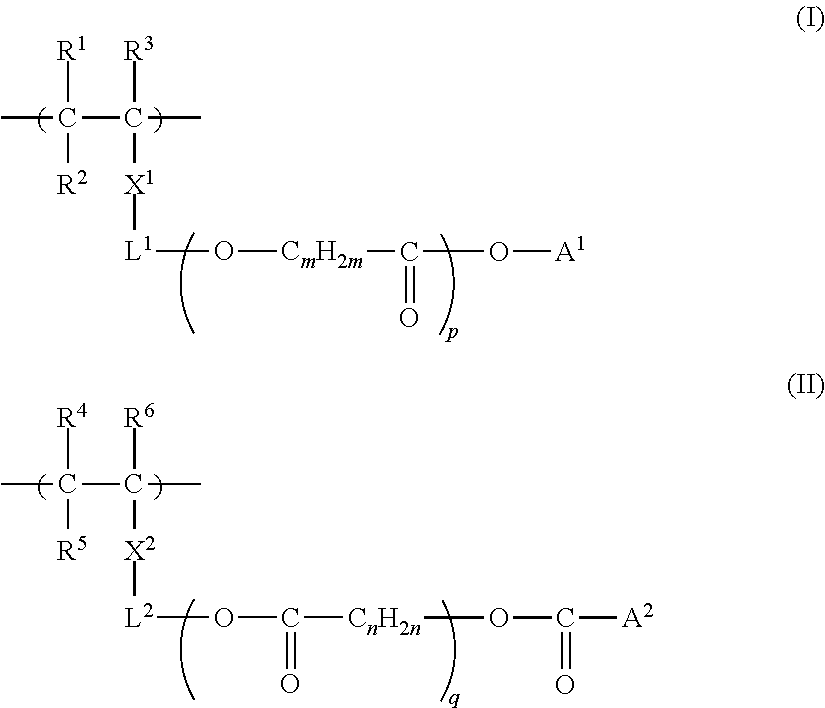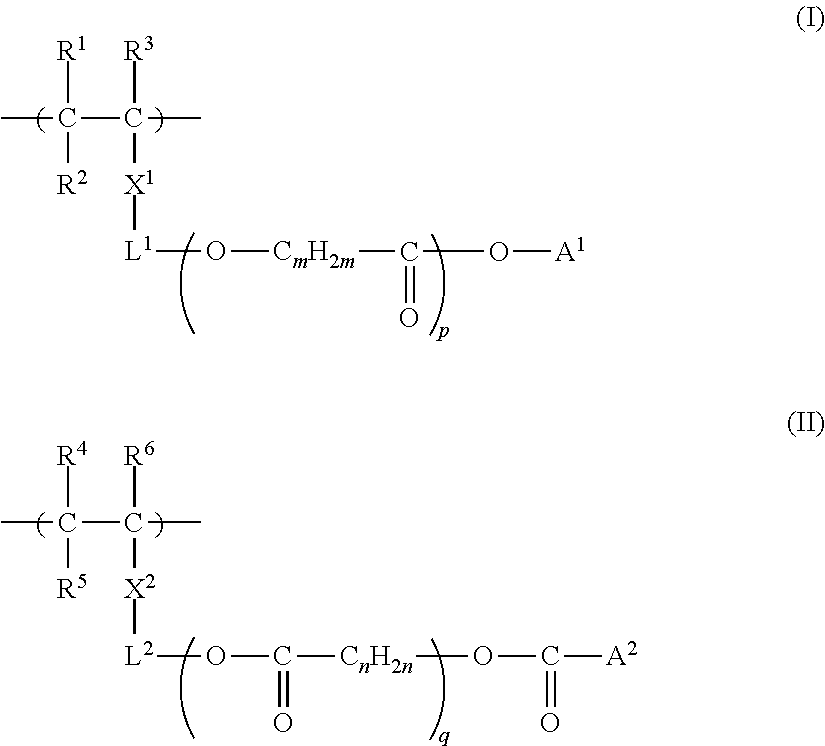Pigment-dispersed composition, colored photosensitive composition, photocurable composition, color filter, liquid crystal display device, and solid-state image pickup device
a technology of pigment-dispersed composition and pigment-dispersed composition, which is applied in the direction of printing, optical filters, electrography/magnetography, etc., can solve the problems of reducing the chromaticity or dimensional precision of a manufactured color filter, and remarkably deteriorating the contrast of the produ
- Summary
- Abstract
- Description
- Claims
- Application Information
AI Technical Summary
Benefits of technology
Problems solved by technology
Method used
Image
Examples
synthesis example 1
Synthesis of Monomer (A-5)]
[0553]160.0 g of ε-caprolactone and 18.3 g of 2-ethyl-1-hexanol were introduced into a 500 mL three-necked flask, and were dissolved by agitating while blowing nitrogen thereinto. 0.1 g of monobutyl tin oxide was added thereto, and the resultant mixture was heated to 100° C. Eight hours later, disappearance of the raw materials was confirmed by gas chromatography, and then the mixture was cooled to 80° C. 0.1 g of 2,6-di-t-butyl-4-methylphenol was added thereto, and then 22.2 g of 2-methacryloyloxyethyl isocyanate was added thereto. Five hours later, disappearance of the raw materials was confirmed by 1H-NMR, and, thereafter, the mixture was cooled to room temperature, as a result of which 200 g of monomer (A-5) in the solid state was obtained. It was confirmed that the product was monomer (A-5) by H NMR, IR and mass analysis.
[0554]The obtained monomer (A-5) is shown above as a preferable specific example of the monomer represented by Formula (i), (ii), or...
synthesis example 2
Synthesis of Specific Polymer (P-5)]
[0556]37.5 g of the monomer (A-5), 5.0 g of the monomer M-11, 7.5 g of methacrylic acid, 1.3 g of dodecyl mercaptan, and 116.7 g of 1-methoxy-2-propanol were introduced into a nitrogen-substituted three-necked flask, and the contents of the flask were agitated with an agitator (Three One Motor, manufactured by Shinto Scientific Co. Ltd.), and heated to 75° C. while blowing nitrogen into the flask. 0.3 g of 2,2-azobis(2,4-dimethylvaleronitrile) (“V-65” manufactured by Wako Pure Chemical Industries, Ltd.) was added thereto, and the resultant mixture was agitated under heating at 75° C. for 2 hours. Two hours later, 0.3 g of V-65 was further added thereto, and the resultant mixture was agitated under heating for 3 hours, as a result of which a 30% solution of specific polymer (P-5) was obtained.
[0557]The weight average molecular weight of specific polymer (P-5) obtained was measured by gel permeation chromatography (GPC) using polystyrene as a standa...
PUM
| Property | Measurement | Unit |
|---|---|---|
| Percent by mass | aaaaa | aaaaa |
| Percent by mass | aaaaa | aaaaa |
| Percent by mass | aaaaa | aaaaa |
Abstract
Description
Claims
Application Information
 Login to View More
Login to View More - R&D
- Intellectual Property
- Life Sciences
- Materials
- Tech Scout
- Unparalleled Data Quality
- Higher Quality Content
- 60% Fewer Hallucinations
Browse by: Latest US Patents, China's latest patents, Technical Efficacy Thesaurus, Application Domain, Technology Topic, Popular Technical Reports.
© 2025 PatSnap. All rights reserved.Legal|Privacy policy|Modern Slavery Act Transparency Statement|Sitemap|About US| Contact US: help@patsnap.com



